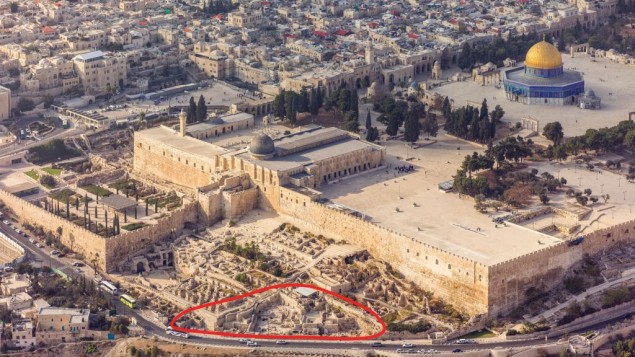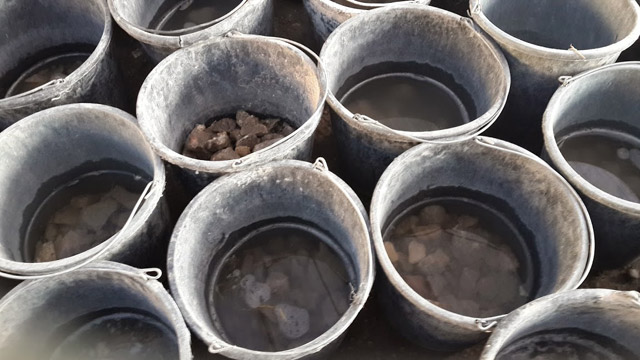(
Hebrew University of Jerusalem Institute of Archaeology)
Measuring 9.7 X 8.6 mm, the oval impression was imprinted on a 3 mm thick soft bulla (piece of inscribed clay) measuring 13 X 12 mm. Around the impression is the depression left by the frame of the ring in which the seal was set.
The impression bears an inscription in ancient Hebrew script:
"לחזקיהו [בן] אחז מלך יהדה"
"Belonging to Hezekiah [son of] Ahaz king of Judah"
and a two-winged sun, with wings turned downward, flanked by two ankh symbols symbolizing life.
The symbols on the seal impression from the Ophel
suggest that they were made late in his life, when both the Royal
administrative authority and the King's personal symbols changed from
the winged scarab (dung beetle) - the symbol of power and rule that had
been familiar throughout the Ancient Near East, to that of the winged
sun - a motif that proclaimed God's protection, which gave the regime
its legitimacy and power, also widespread throughout the Ancient Near
East and used by the Assyrian Kings.Dr. Eilat Mazar: “Although seal impressions bearing
King Hezekiah's name have already been known from the antiquities market
since the middle of the 1990s, some with a winged scarab (dung beetle)
symbol and others with a winged sun, this is the first time that a seal
impression of an Israelite or Judean king has ever come to light in a
scientific archaeological excavation.”The discovery of King Hezekiah's Royal Seal impression
in the Ophel excavations vividly brings to life the Biblical narratives
about King Hezekiah and the activity conducted during his lifetime in
Jerusalem's Royal Quarter.
The Ophel excavations at the foot of the southern wall of the Temple Mount in Jerusalem
Photo: Courtesy Andrew ShivaThe bulla was discovered in a refuse dump dated to the time of King Hezekiah or shortly after, and originated in the Royal Building that stood next to it and appears to have been used to store foodstuffs. This building, one of a series of structures that also included a gatehouse and towers, was constructed in the second half of the 10th century BCE (the time of King Solomon) as part of the fortifications of the Ophel - the new governmental quarter that was built in the area that connects the City of David with the Temple Mount.
The bulla originally sealed a document written on a papyrus rolled and tied with thin cords, which left their mark on the reverse of the bulla. It was found together with 33 additional bullae imprinted from other seals, some bearing Hebrew names, their reverse showing marks of coarse fabric and thick cords that probably sealed sacks containing foodstuffs.
The seal impression was found during the wet-sifting of earth layers from the excavation in the Emek-Zurim wet-sifting facility, directed by Dr. Gabriel Barkai and Zachi Dvira, under the auspices of the Nature and Parks Authority and the Ir David Foundation.
 Sifting material at the Emek Zurim facilityCopyright: S. Lederhendler
Sifting material at the Emek Zurim facilityCopyright: S. LederhendlerThe renewed Ophel excavations (2009-2013), and the processing of the finds as well as the preservation and preparation of the excavated area for tourists by the Israel Antiquities Authority were made possible through funding provided by Daniel Mintz and Meredith Berkman (New York).The excavation site is situated within the Ophel Archaeological Park, which is part of the National Park Around the Walls of Jerusalem under the auspices of the Israel Nature and Parks Authority.
A third-generation archaeologist working at the Hebrew University's Institute of Archaeology, Dr. Mazar directs excavations on the City of David's summit and in the Ophel to the south of the Temple Mount's southern wall. Among her many archaeological finds over the years, in 2013 she revealed to the world an ancient golden treasure discovered at the Ophel.